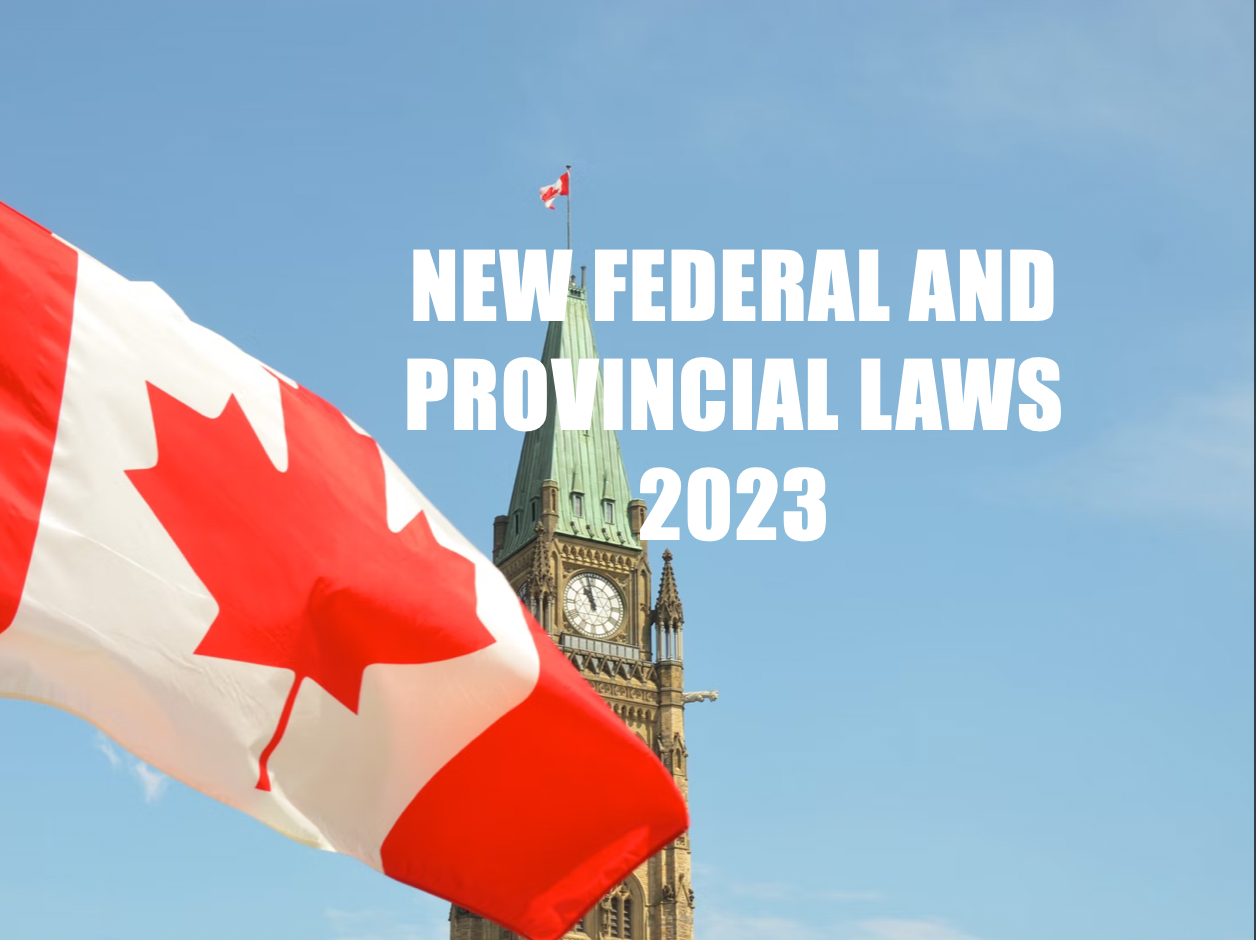2023 Brings in New Federal and Provincial Laws in Canada
With the new year comes a wave of new federal and provincial laws that are expected to affect clients and financial planners alike. As the country navigates through the latest changes, it is important to be aware of the laws and how they will impact one’s financial life. Here is a breakdown of the most significant changes in 2023.
Federal Ban on Foreign Homebuyers
As of January 1st, 2023, a two-year federal ban on foreign homebuyers in Canada has come into effect. The ban is aimed at stabilizing the housing market and ensuring that Canadians have better access to purchasing homes. The new law imposes a $10,000 fine on anyone who is not a Canadian citizen or permanent resident and buys residential property. However, there are exemptions to the ban, including foreign buyers purchasing recreational properties, residential real estate outside of cities with a population of at least 100,000, and certain individuals like international students and refugee claimants. Despite the new law, real estate experts predict that it will have a minimal impact on Canada’s housing affordability issues.
Minimum Wage Increases
In 2023, some provinces will raise their minimum hourly wage, providing a boost to low-wage workers. The following are the changes by province:
- Nova Scotia will increase its minimum wage by 70 cents to $14.30 on April 1st and by an additional 35 cents to $14.65 on October 1st.
- Manitoba will raise its minimum wage by 65 cents to $14.15 on April 1st and by another $1 to $15 on October 1st.
- Saskatchewan will raise its minimum wage to $14 from $13, effective October 1st.
- Prince Edward Island raised its minimum wage by 80 cents to $14.50 on January 1st and will increase it by another 50 cents to $15 on October 1st.
- Newfoundland and Labrador will increase its minimum wage by 80 cents to $14.50 on April 1st and by another 50 cents to $15 on October 1st.
New CRA Tax Rules
The Canadian Revenue Agency (CRA) has made several updates to its tax rules in 2023, affecting Canadians’ pocketbooks. Here are the key changes to look out for:
- Tax Brackets Indexed for Inflation: All five federal income tax brackets have been adjusted by 6.3% to keep up with inflation.
- Basic Personal Amount: The Basic Personal Amount (BPA) is the amount Canadians can earn before paying any federal income tax. The BPA has been increased for 2023 to $15,000 from $14,398 in 2022.
- TFSA Contribution Limit: The annual contribution limit for tax-free savings accounts has risen to $6,500, up from $6,000 in 2022.
- RRSP Contribution Limit: The CRA imposes an annual limit on how much Canadians can deposit into their RRSP account. The limit in 2023 remains 18% of the previous year’s income, with a maximum contribution of $30,780, up from $29,210 in 2022.
- CPP and EI Payroll Deductions: Canadians can expect higher Canada Pension Plan (CPP) and Employment Insurance (EI) deductions on their paycheques in 2023. The CPP contribution rate for 2023 is rising to 5.95% and to 11.9% for self-employed Canadians. The estimated maximum contribution is $3,701, up from $3,499 in 2022. The federal EI contribution rate is 1.63%, up to a maximum of $1,002.45.


